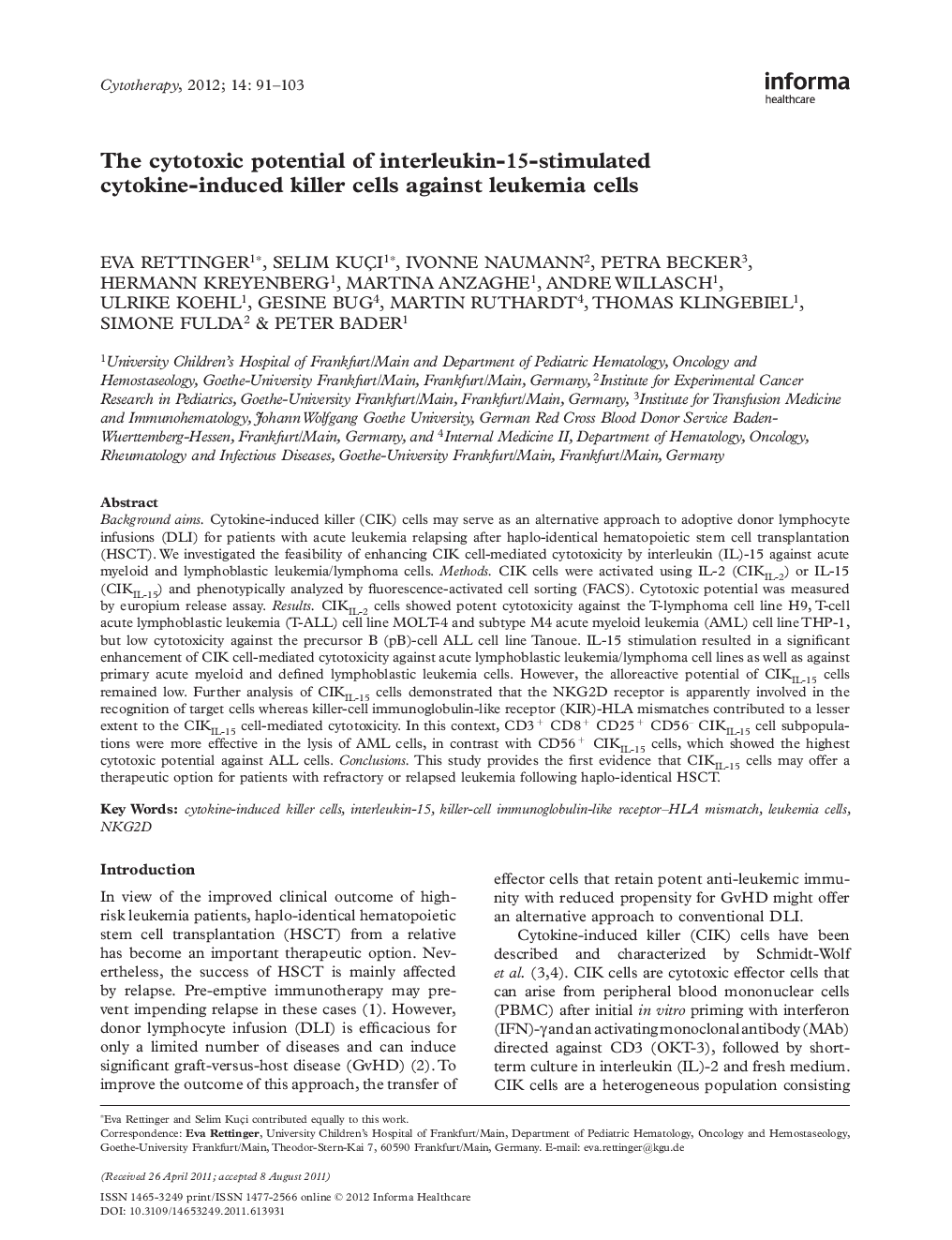| Article ID | Journal | Published Year | Pages | File Type |
|---|---|---|---|---|
| 2171843 | Cytotherapy | 2012 | 13 Pages |
Background aimsCytokine-induced killer (CIK) cells may serve as an alternative approach to adoptive donor lymphocyte infusions (DLI) for patients with acute leukemia relapsing after haplo-identical hematopoietic stem cell transplantation (HSCT). We investigated the feasibility of enhancing CIK cell-mediated cytotoxicity by interleukin (IL)-15 against acute myeloid and lymphoblastic leukemia/lymphoma cells.MethodsCIK cells were activated using IL-2 (CIKIL-2) or IL-15 (CIKIL-15) and phenotypically analyzed by fluorescence-activated cell sorting (FACS). Cytotoxic potential was measured by europium release assay.ResultsCIKIL-2 cells showed potent cytotoxicity against the T-lymphoma cell line H9, T-cell acute lymphoblastic leukemia (T-ALL) cell line MOLT-4 and subtype M4 acute myeloid leukemia (AML) cell line THP-1, but low cytotoxicity against the precursor B (pB)-cell ALL cell line Tanoue. IL-15 stimulation resulted in a significant enhancement of CIK cell-mediated cytotoxicity against acute lymphoblastic leukemia/lymphoma cell lines as well as against primary acute myeloid and defined lymphoblastic leukemia cells. However, the alloreactive potential of CIKIL-15 cells remained low. Further analysis of CIKIL-15 cells demonstrated that the NKG2D receptor is apparently involved in the recognition of target cells whereas killer-cell immunoglobulin-like receptor (KIR)-HLA mismatches contributed to a lesser extent to the CIKIL-15 cell-mediated cytotoxicity. In this context, CD3 + CD8 + CD25 + CD56− CIKIL-15 cell subpopulations were more effective in the lysis of AML cells, in contrast with CD56 + CIKIL-15 cells, which showed the highest cytotoxic potential against ALL cells.ConclusionsThis study provides the first evidence that CIKIL-15 cells may offer a therapeutic option for patients with refractory or relapsed leukemia following haplo-identical HSCT.
